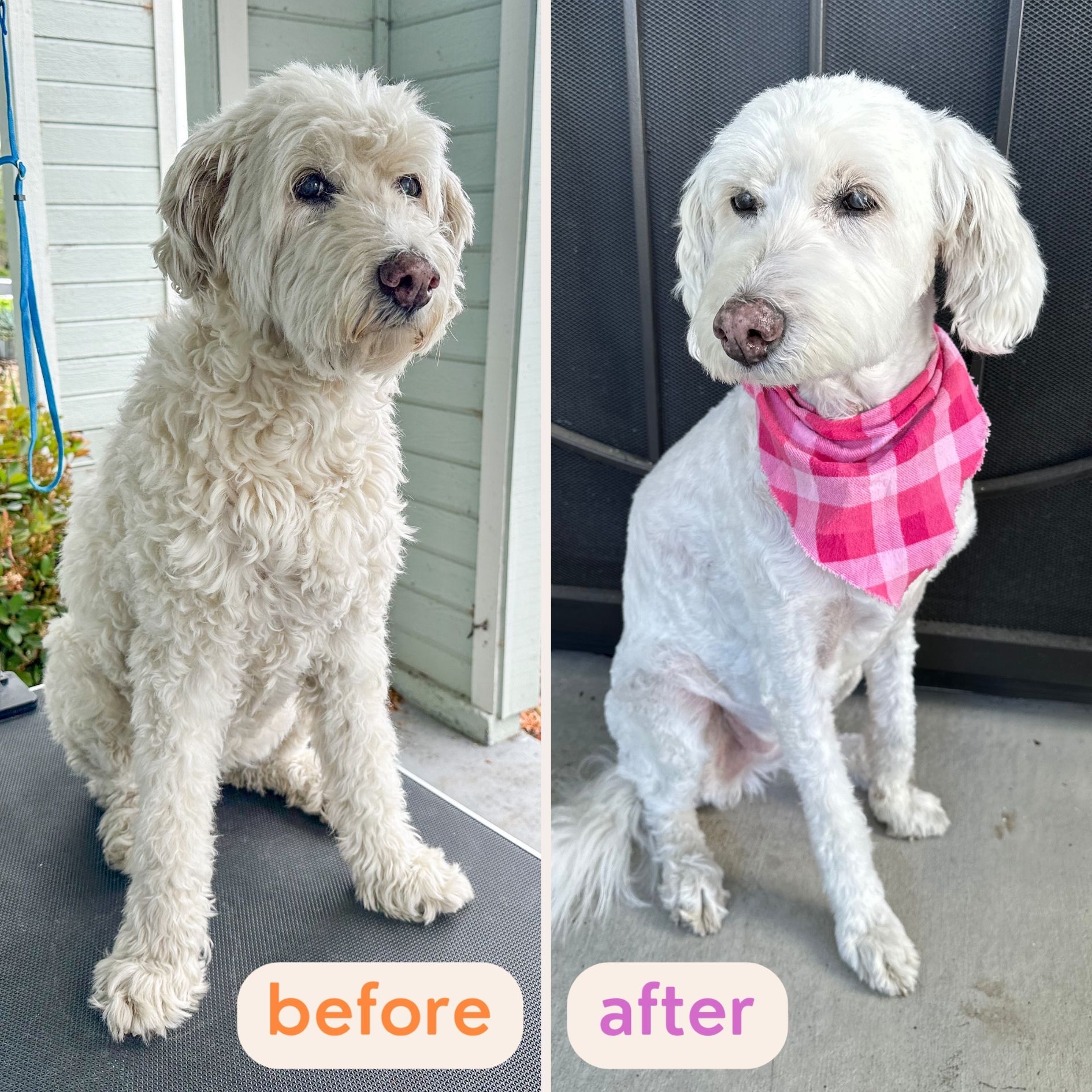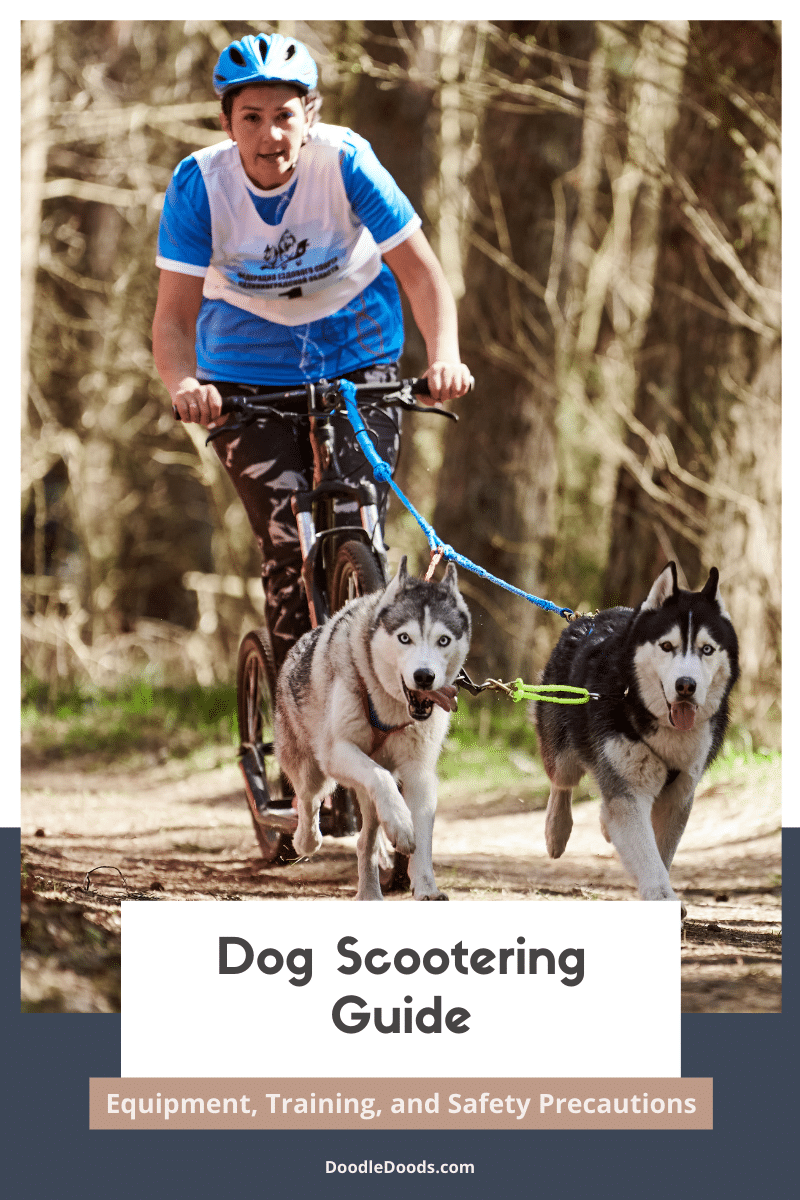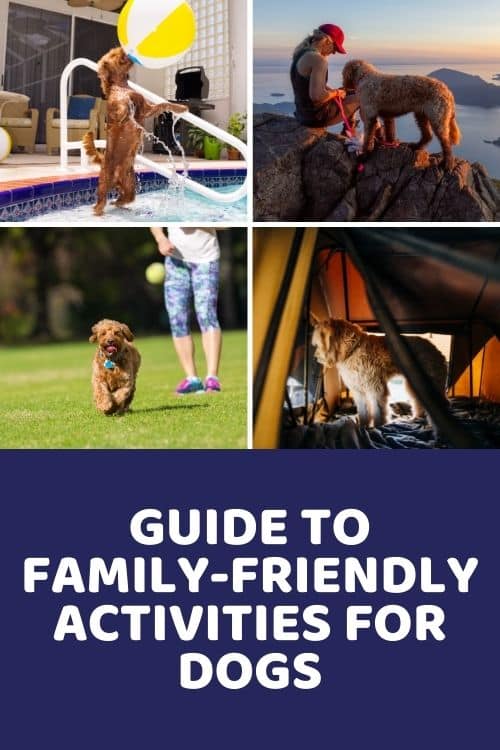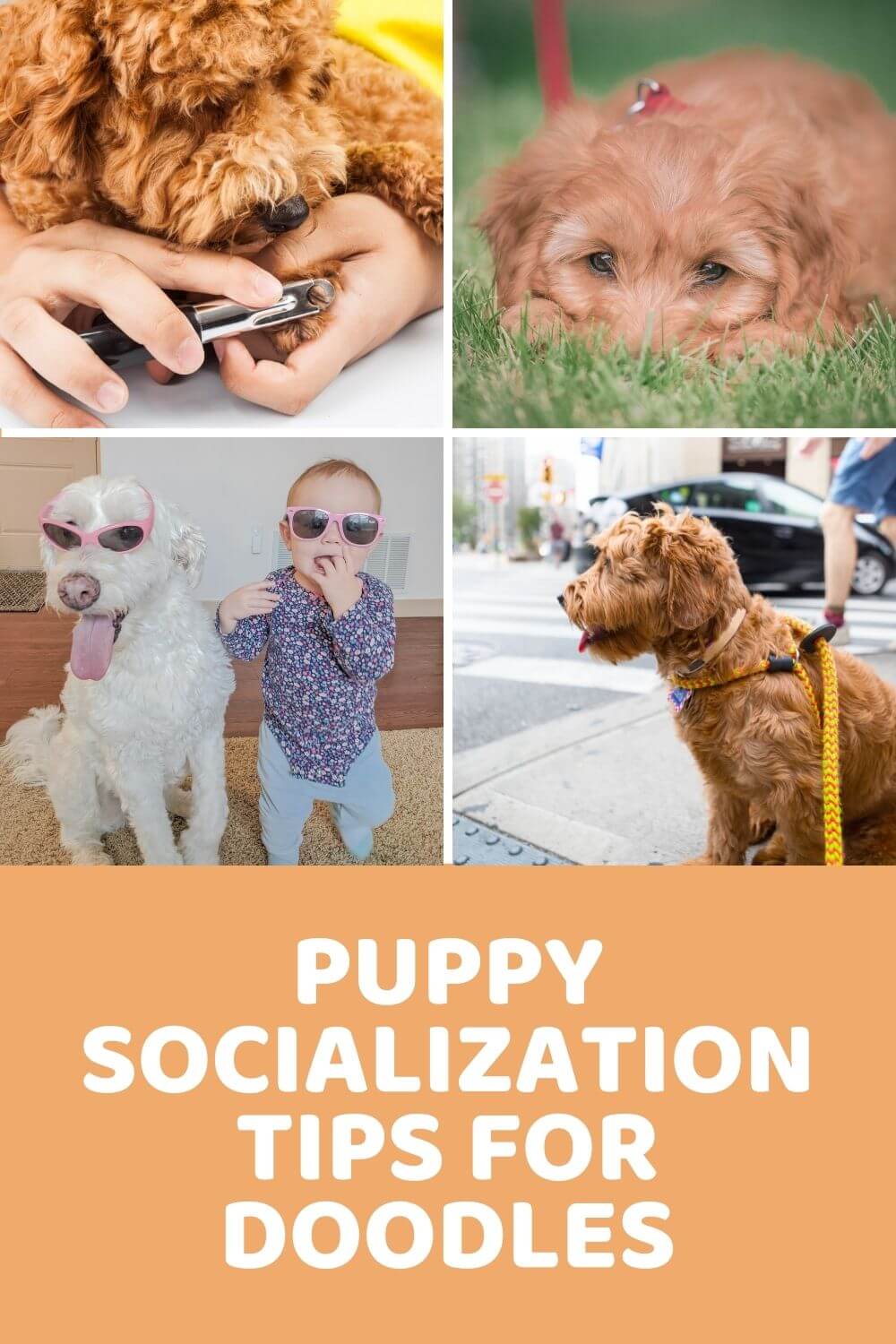If you’ve been thinking about utilizing your dog’s natural intelligence and athleticism even further, then dog scootering just might be the next awesome activity to get your pup started on. In this guide, you’ll learn all about the dog scootering sport, including what equipment you’ll need, how to train your dog for that, and why it could be beneficial for both you and your best pal. Let’s get started!
Table of Contents
- Beginners Guide To Dog Scootering: Introduction
- What Is Dog Scootering?
- Equipment You Need To Get Started With Dog Scootering
- How To Pick The Right Scooter For Dog Scooter Racing?
- Are There Any Health Benefits Of Dog Scootering Sport?
- How Do I Train My Dog For Dog Scooter Racing?
- The Do’s And Don’ts Of Dog Scootering
- Dog Scootering FAQs
- Dog Scootering Guide: Final Thoughts
Beginners Guide To Dog Scootering: Introduction
With active breeds that are naturally born working dogs, finding the right kind of activities can prove to be a hassle. In today’s world where many of us live in highly populated cities, it’s often not the easiest thing trying to figure out the best, healthiest outlet for all of your pup’s pent up energy.
While a dog on a scooter is definitely a funny sight, that’s not really what dog scootering is about. Dog scootering is actually a legitimate sport that can improve your dog’s health and stimulate them both mentally and physically. It’s an excellent way to do something fun with your pooch and strengthen the bond you share with your best friend. So, what exactly is dog scootering..?
What Is Dog Scootering?
Dog scootering is a sport where one or more dogs pull a special non-motorized scooter. Dog scootering is similar to bikejoring or dog mushing in the sense that your dog is harnessed to the scooter and pulls it forward whilst running. For dog scootering, you’ll need a specific kind of large-wheeled scooter where you can stand on and use your legs to push when your dog needs assistance.
Dog scootering is an excellent sport for sledding dogs and dogs who excel at running, such as Siberian Huskies, Greenland Dogs, or Alaskan Malamutes. But to be fair, all dogs who are naturally energetic, athletic, and appropriately-sized can take part in this sport.
Equipment You Need To Get Started With Dog Scootering
For dog scooter racing, you’ll need the right kind of equipment so that the sport is safe for you, your dog (or dogs), and other people who you may encounter while out dog scootering. Here’s everything you’ll need:
- A dog scooter with large wheels and a large footboard.
- A comfortable, fitted X-back harness for your dog. You can also look into mushing or sledding harnesses.
- A tow line or lead tug that connects your dog to the scooter, usually with a bungee cord type elastic material to absorb the shock. If you’ve got two dogs, be sure to get a double lead tug that you can attach onto them both.
- If scootering with two dogs, you’ll need a neckline to keep your dogs running at the same pace and prevent the line from tangling.
- Depending on the weather conditions and the terrain, dog booties might also be helpful to prevent your dog’s paws from getting injured.
- A helmet for your safety. For added comfort, you can also get a good set of gloves and glasses.
Be sure to also bring along a comfortable backpack with any other items you and your dog might need during the trek, such as clean drinking water and a portable water bowl, treats and snacks for rewarding your pup, a first-aid kit, and poop bags.
How To Pick The Right Scooter For Dog Scooter Racing?
For dog scooter racing, a small kick scooter isn’t a suitable option. Instead, you’ll need a non-motorized scooter with large wheels and a large footboard. The wheels can range between 16 inches and 26 inches, with the front wheel being at least 20 inches. This provides you with better stability and control over the scooter in all sorts of different environments.
The right scooter for this sport should also have a large footboard that you can comfortably stand on. When necessary, you can use your feet to kick the scooter off, especially when the terrain is a bit trickier and your dog needs some help with pulling the scooter.
These types of scooters will also have brakes, which adds a layer or safety to the sport. Brakes will be necessary whenever your dog starts to chase something or someone so that you can slow them down. Similarly, brakes will keep you safe in case your dog decides to suddenly stop.
Are There Any Health Benefits Of Dog Scootering Sport?
As you can probably guess, dog scootering is an excellent workout for dogs. It’s quite an intensive exercise so your pup will definitely get a good workout even after a 10 to 15 minute session. For some breeds, simply walking and playing around in the backyard won’t suffice, they also need vigorous exercise to stay healthy and happy. And dog scootering is just perfect for that!
Regular exercise obviously has many great health benefits for your dog. It’s going to keep them in a healthy shape, prevent obesity, and also minimize the risk of various health conditions like heart disease or even diabetes.
In addition to that, dog scootering is a great way to mentally stimulate your dog. It involves commands and proper training so your pup gets to put its smart lil’ brain to use. Regardless of your dog’s age, size, or breed, keeping them physically and mentally stimulated is vital to prevent boredom, stress, anxiety, and destructive behaviors. And the more active and intelligent your dog naturally is, the more enrichment they’ll need on a daily basis. For this reason, dog scootering is a great exercise for breeds that are otherwise very difficult to tire out.
Then there’s also the added benefit of building a stronger bond with your dog or dogs. By enjoying this fun and adrenaline-packed activity together, you’ll get to spend more time with your furry companions outdoors and strengthen your bond.
How Do I Train My Dog For Dog Scooter Racing?
So, how to get started with dog scootering? Fortunately, there are just a few simple steps to get started. Here’s what you should know…
Start With Basic Commands
Before anything else, you should first teach your dog basic commands and then move onto the commands that are necessary to direct your dog when dog scootering. You can start with the commands when you’re out on a walk, jog, or run with your dog.
- “Go” – To start moving/running
- “Stop“ – To fully stop
- “Easy“ – To slow down
- “Hike” or “Pull” – To go forward
- “Left“ or “Haw” – To turn left
- “Right“ or “Gee” – To turn right
- “Leave it“ – To ignore a distraction.
Don’t forget to reward your dog with plenty of praise and tasty treats when they successfully obey a command. Stay consistent and patient and always use positive reinforcement. By teaching these commands to your dog on a consistent basis, they’ll soon learn exactly what’s expected of them.
Train Your Dog For Endurance
Dog scootering is an intensive sport and you shouldn’t expect your pooch to pull the scooter for long periods of time, especially as you start introducing them to the sport. You should gradually introduce your pup to the sport, only increasing the time spent exercising over time. This way, it’ll create positive associations for your pooch and it won’t cause any potential harm for their joints or overall health. A good place to start is with short intervals of about 600 feet or 200 meters.
Keep the training sessions short and sweet at first, increasing them in distance and a few minutes in time after a few sessions. Also, you don’t want to exercise your dog too frequently in the beginning. Just once or twice a week will be enough at first. Over time, you can increase the frequency of the training sessions.
Help Your Dog Get Used To The Scooter
Some dogs may have a difficult time running in front of the scooter at first. The sound might make them a bit anxious or scared, which is completely normal. A helpful tip is to have a friend or another family member walk in front of your dog and encourage them to move forward whilst you walk behind them with the scooter.
You can also teach your dog to pull something by attaching an object onto their lead, like a bottle or a tree branch. This will help your dog get used to hearing something behind them and prevent the nervousness.
If your dog doesn’t understand how to pull on the scooter at first, you can have a friend ride a bike in front of them whilst your dog is harnessed to the scooter. It’s not uncommon for dogs to get the urge to chase the biker in front of them, which will then also result in your dog pulling the scooter forward.
The Right Equipment & Safety Measures Are A Must
Needless to say, you need the right kind of equipment for dog scootering. It’s not just about having a fancy scooter and a cute harness, it’s mainly about safety. If you’re using the wrong equipment, it can be extremely dangerous for both you and your pet.
You should also make sure to double check that the scooter’s tires are ready for a ride, the brakes are working flawlessly, and that all harnesses and tow lines are safely secured and attached where they need to be. And don’t forget to wear a helmet!
To prevent heat stroke and overexertion, make sure to take plenty of breaks and bring along a water bottle and a portable water bowl for your dog. You should give them small sips of water before, during, and after the exercise.
The Do’s And Don’ts Of Dog Scootering
Do:
- Purchase the right kind of equipment for the sport, including a suitable scooter and an appropriately-sized harness for your dog.
- Start training your pup the needed commands for the sport early on.
- Assist your dog when exercising on hills or more difficult terrains.
- Take breaks and provide plenty of drinking water for your dog.
- Always wear a helmet to keep you out of harm’s way.
Don’t:
- Don’t start dog scootering too early, as young puppies shouldn’t overexert themselves with exercise or pulling.
- Don’t force an elderly dog or a dog with health conditions (such as joint problems and hip dysplasia) to take part in vigorous exercise;
- Don’t go dog scootering in busy areas or trails when your dog isn’t fully trained and desensitized to other people running, biking, or wildlife passing by.
- Don’t let dogs that are too small participate in the sport. While dog scootering is a great exercise for larger and more athletic breeds, it’s not a suitable option for pups like Chihuahuas or Cavaliers.
- Don’t take your dog out for scootering in extreme weather conditions. While many breeds, especially ones with sledding background, have no problem exercising in cold weather, they may easily overheat and suffer a heat stroke in very hot climates.
Dog Scootering FAQs
Almost any dog breed that has the right size, endurance, and natural capabilities can run in harness with a scooter. Obviously, dog scootering is more suited for larger breeds, most commonly for dogs in the working group that have been bred for generations to pull sleds and perform other physically taxing tasks. But to be fair, even medium-sized dogs could participate in this sport. However, you have to help along by pushing the scooter as medium-sized dogs simply won’t have the same strength and stamina as larger breeds.
As puppies are still growing and don’t have fully developed joints, bones, and muscles yet, they shouldn’t start scootering until they’re old enough to take part in more vigorous sports and pulling. Around the time your dog is one year old, you can start introducing them to some light pulling. Of course, you should consult with your vet beforehand to ensure that it’s completely safe for your pet to do so.
That being said, you can start introducing your pup to being harnessed much earlier than that. You can start with commands already in puppyhood and let your pup pull on very light objects when they’re younger so that they can get used to it by the time they’re ready to start dog scootering. You can also let your puppy inspect the scooter when they’re still young. This helps them get used to being around one and prevent fear.
The best trails for dog scootering are quieter where there isn’t too much traffic in terms of people running, jogging, or biking. Singletrack trails can be a bit too narrow for this sport, whereas double track and atv trails have more room for you to exercise with your pets. Keep in mind that dogs may get the urge to start chasing other people on bikes, scooters, or even when an animal suddenly pops out onto the trail. So be sure to only take your dog out for scootering once you’ve mastered the training and can be sure that your dog won’t pose any risks to themself, you, or anyone else on the trail.
Dog Scootering Guide: Final Thoughts
Dog scootering is not just a fun activity to share with your canine pals, but also an excellent form of exercise for more active and athletic breeds. We hope this guide has answered all of your questions about this sport so that you can have lots and lots of fun with your best pal outdoors!
Want to Learn
DIY Doodle Grooming?

 “Every concern and question I had now has clear, practical solutions.” – Paula D.
“Every concern and question I had now has clear, practical solutions.” – Paula D.
 “These lessons have provided tremendous amounts of information.” – Steve B.
“These lessons have provided tremendous amounts of information.” – Steve B.
 “Buy the course and complain about how easy it is!” – Chris S.
“Buy the course and complain about how easy it is!” – Chris S.
Learn How To Groom Your Doodle At Home…
Safely…And Without Confusion:





